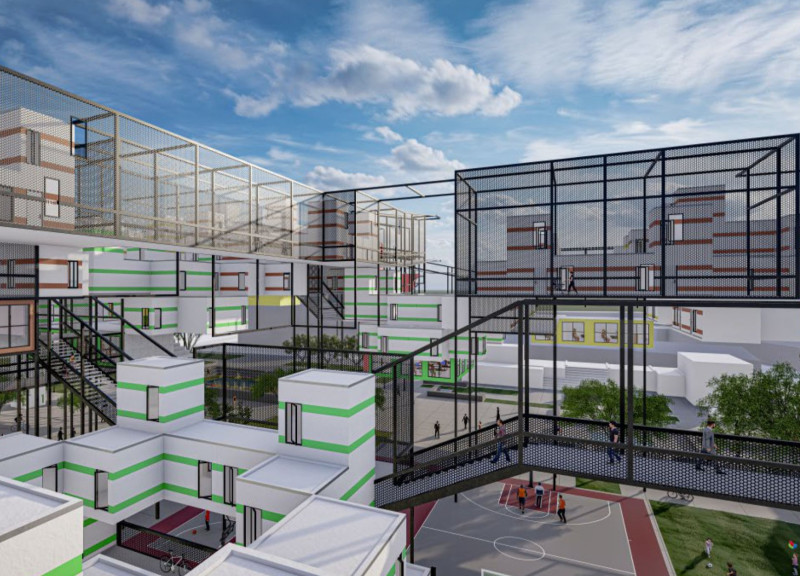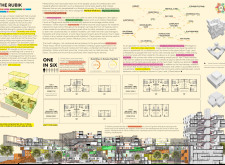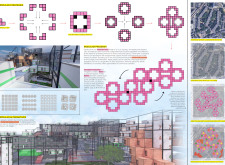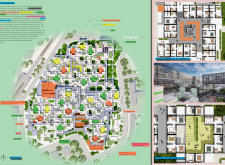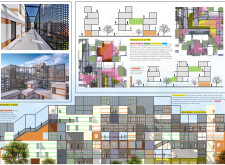5 key facts about this project
The architectural design emphasizes adaptability and functionality. The modular units can be arranged and reconfigured based on varying family sizes and communal needs. This flexibility not only optimizes space but also encourages a sense of belonging and interaction among residents.
Innovative Modular Design
One of the defining features of The Rubik Project is its modular system. Each housing unit is designed to be interchangeable and configurable, enabling arrangements that can accommodate individuals, couples, or families. This approach allows for scalability and personalization within the residential community. The integration of communal kitchens, fitness areas, and medical facilities within the design reflects a commitment to addressing the holistic needs of the residents.
Moreover, the project incorporates outdoor communal spaces, designed as courtyards, which serve as critical social hubs. These spaces encourage interaction and collaboration among residents, providing venues for community activities, workshops, and events. Such thoughtful programming underscores the project's focus on enhancing social connectivity and community wellness.
Sustainable Material Use
The material selection within The Rubik Project further distinguishes it from conventional housing designs. Utilizing materials such as aluminum for screening, concrete for structural integrity, glass for natural light, and wood for warmth, the architecture is both functional and aesthetically pleasing. This combination promotes a comfortable living environment while ensuring durability and sustainability.
Additionally, the design incorporates energy-efficient technologies and sustainable practices, reinforcing the project's dedication to environmental stewardship. The emphasis on natural ventilation, passive heating, and energy-efficient lighting systems supports the health and well-being of residents while reducing the overall carbon footprint.
For those interested in examining the architectural plans, sections, and designs in detail, further exploration of The Rubik Project is encouraged. Understanding the architectural ideas that define this project provides valuable insights into its unique approaches to social housing and community building.


